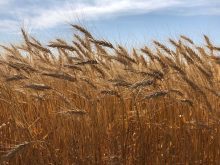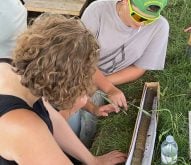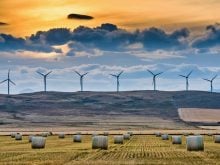Glacier FarmMedia — For much of the last five years, the federal government has been setting targets for Canadian farmers to reduce nitrous oxide emissions from fertilizer and methane emissions from cattle.
The government has provided funding to help producers cut methane and nitrous oxide emissions from primary agriculture, while constantly beating the drumbeat of emissions, emissions, emissions.
What has sometimes been missed in this focus on emission reduction are the improvements made on Canadian farms over the last 35 years.
Read Also

Claas brings 1000 Series SP forage harvesters to Canada
In mid-August, Claas unveiled its new line of Jaguar forage harvesters at an event in Visalia, California, deep in the heart of that state’s dairy region.
“We are producing the lowest emission metric tonnes of crop commodities in the world,” Kristjan Hebert, a farmer from Moosomin, Sask., told the Canadian Crops Convention in Winnipeg in March.
“So, if you’re focused on global emissions and you’re buying commodities, you should buy them from Canada.”

It’s frustrating for Hebert and many others that the federal government doesn’t promote that good news about Canadian agriculture on the world stage.
However, Statistics Canada recently published a Census of Environment data portal this winter. The census is loaded with facts and figures about farming and the positive changes made in agriculture since the 1980s.
It requires a lot of digging to find the data, but Statistics Canada and Agriculture and Agri-Food Canada do have some complimentary things to say about farming and how it has become more sustainable.

In Central Canada, soil organic carbon declined over the same period, partly because of a shift from perennial to annual crops.


“Soil organic matter has been increasing on agricultural lands in Canada. In 2016 Canadian agricultural soils removed 11.2 million tonnes of carbon dioxide from the atmosphere,” an AAFC website on soil organic matter reports.
The website contains a Soil Carbon Change Index, which shows that soil carbon conditions have gone from “moderate” in the 1980s to “good” in the 2000s.
“The index illustrates a strong upward trend through to 2006 from an index value of 48 in 1981, to a higher value of 78 in 2006,” AAFC says.

“This national scale improvement came about primarily as a result of widespread adoption of reduced (conservation) tillage and no-till, a decrease in the use of summerfallow and an increase in the use of perennial forage crops in the Prairies.”
The website notes that there’s a significant difference between Central Canada and the Prairies for soil carbon. Soil conditions in the East have declined over the last 30 to 40 years.
“While the national trend for soil organic carbon is positive, this has been slightly offset by localized decreases in soil carbon in parts of eastern Ontario and southern Quebec,” AAFC says, mostly because of a land use shift from pastures to annual crops and more tillage.
AAFC also has some upbeat information about soil erosion and salinization.
Thanks to the adoption of reduced tillage and the near elimination of summerfallow, the risk of soil erosion has “declined greatly” since the 1980s, AAFC says.

The changes in soil management have also cut the probability of soil salinity and the yield losses associated with salinization.
“From 1981 to 2016, (the changes) have lessened the risk of salinization and indicate a trend towards improved soil health and agri-environmental sustainability,” an AAFC document says.

The tone of the AAFC documents on soil erosion, salinity and soil organic carbon suggests that government and the public should acknowledge the positive changes within agriculture.
Setbacks
The documents, however, also make note of recent trends that could make farming less sustainable.
The soil health benefits from reduced tillage and eliminating summerfallow have levelled off since the late 2000s. Soil erosion risk is increasing in Manitoba and other parts of the Prairies as tillage returns to some farms.
And in the last 15 years, more farmers have plowed up pastureland to plant canola, wheat and other crops.
“Conversion of native grassland or long-term perennial hay-land to cropland causes soil organic carbon loss,” AAFC says.
“The long-term merits of breaking this often-marginal land for crops needs to be considered carefully.”
















